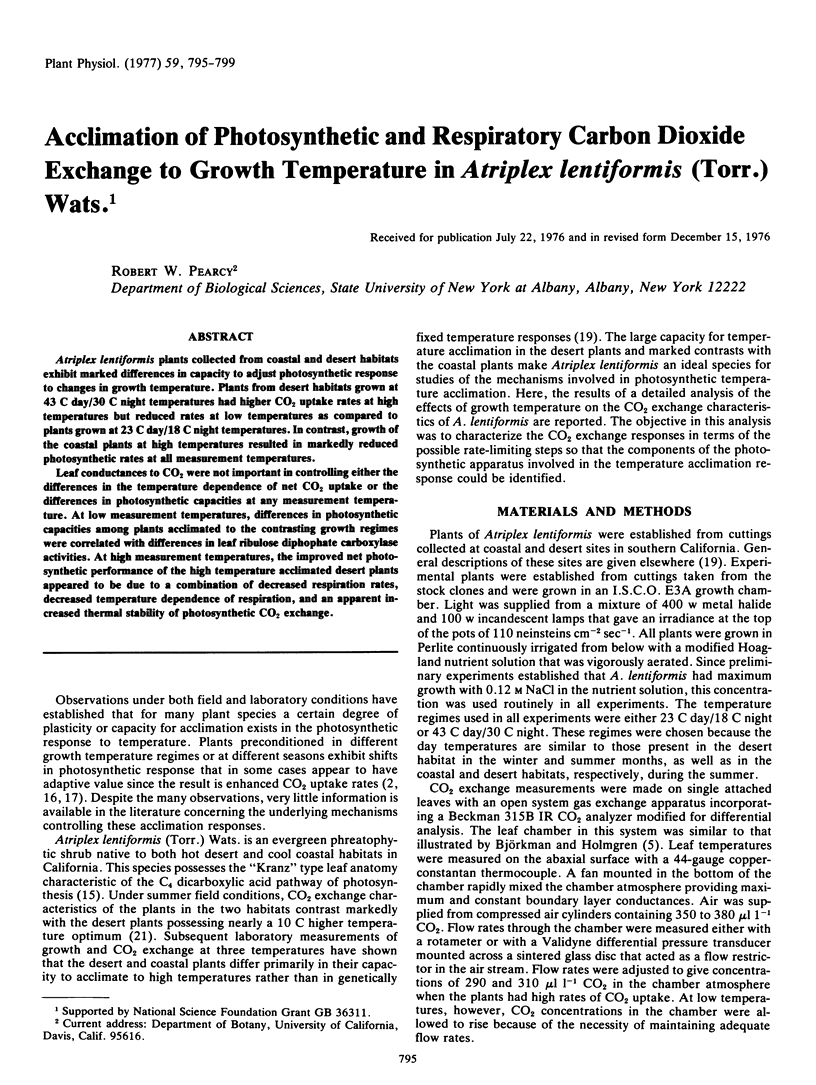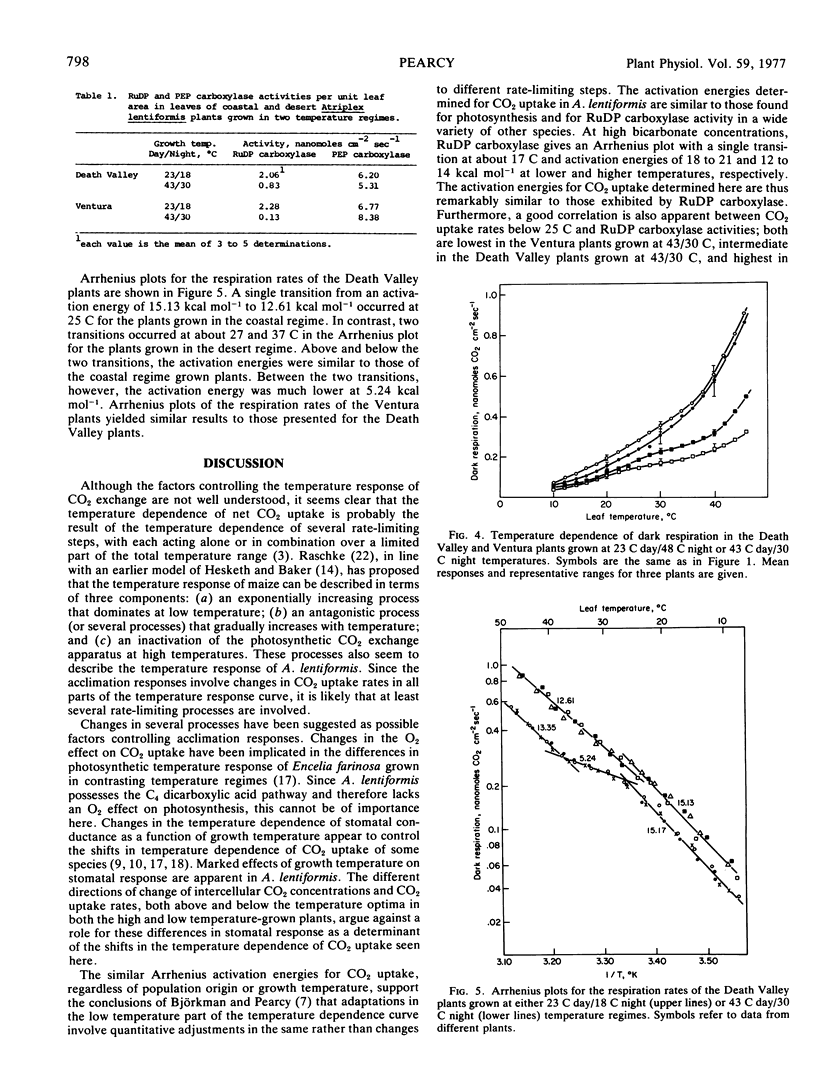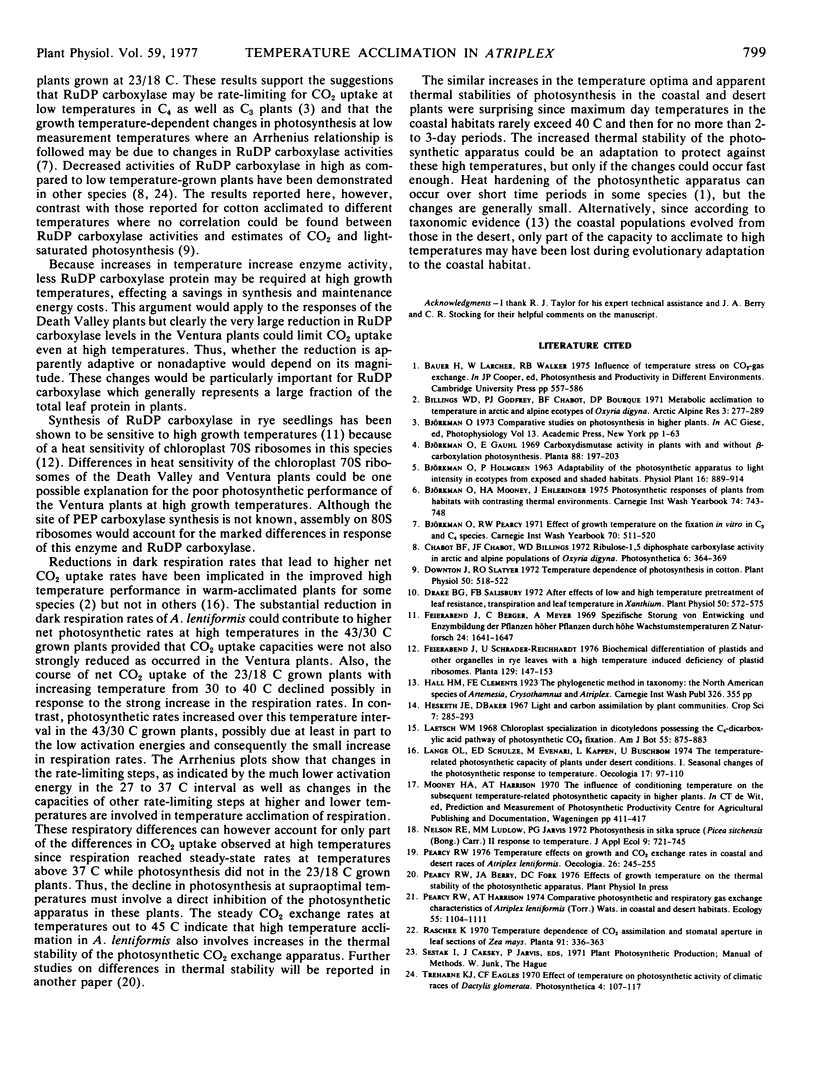Abstract
Atriplex lentiformis plants collected from coastal and desert habitats exhibit marked differences in capacity to adjust photosynthetic response to changes in growth temperature. Plants from desert habitats grown at 43 C day/30 C night temperatures had higher CO2 uptake rates at high temperatures but reduced rates at low temperatures as compared to plants grown at 23 C day/18 C night temperatures. In contrast, growth of the coastal plants at high temperatures resulted in markedly reduced photosynthetic rates at all measurement temperatures.
Leaf conductances to CO2 were not important in controlling either the differences in the temperature dependence of net CO2 uptake or the differences in photosynthetic capacities at any measurement temperature. At low measurement temperatures, differences in photosynthetic capacities among plants acclimated to the contrasting growth regimes were correlated with differences in leaf ribulose diphophate carboxylase activities. At high measurement temperatures, the improved net photosynthetic performance of the high temperature acclimated desert plants appeared to be due to a combination of decreased respiration rates, decreased temperature dependence of respiration, and an apparent increased thermal stability of photosynthetic CO2 exchange.
Full text
PDF




Selected References
These references are in PubMed. This may not be the complete list of references from this article.
- Downton J., Slatyer R. O. Temperature dependence of photosynthesis in cotton. Plant Physiol. 1972 Oct;50(4):518–522. doi: 10.1104/pp.50.4.518. [DOI] [PMC free article] [PubMed] [Google Scholar]
- Drake B. G., Salisbury F. B. Aftereffects of low and high temperature pretreatment on leaf resistance, transpiration, and leaf temperature in xanthium. Plant Physiol. 1972 Nov;50(5):572–575. doi: 10.1104/pp.50.5.572. [DOI] [PMC free article] [PubMed] [Google Scholar]
- Feierabend J., Berger C., Meyer A. Spezifische Störung von Entwicklung und Enzymbildung der Plastiden höherer Pflanzen durch hohe Wachstumstemperaturen. Z Naturforsch B. 1969 Dec;24(12):1641–1647. [PubMed] [Google Scholar]


